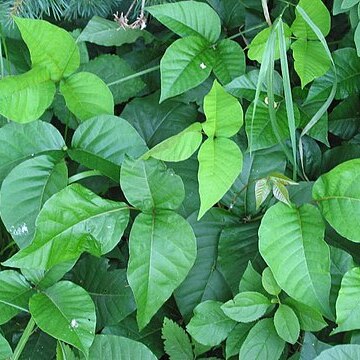Deciduous shrubs or trees, rarely a woody climber, with white latex in phloem, turning black upon air exposure, polygamous or dioecious. Leaves imparipinnately compound, 3-foliolate or simple. Inflorescence axillary, paniculate or racemose, often pendulous at fructification; floral subtending bracts deciduous. Flowers functionally unisexual or bisexual, 5-merous. Ovary 1-locular and 1-ovulate; styles 3, often united basally. Drupe subglobose or oblique, glabrous or minutely pubescent to hirsute, never glandular pubescent; exocarp thin, yellow, dehiscent or indehiscent at maturity; mesocarp white waxy, with brown longitudinal resin ducts.
Deciduous trees, shrubs or woody vines with poisonous sap, dioecious. Leaves alternate, compound, mostly imparipinnate, leaflets opposite. Flowers in axillary, thyrsoid panicles or racemes, bracts not persistent, fruiting inflorescences pendent. Sepals 5, imbricate in bud, persistent in fruit. Petals usually 5. Stamens 5, inserted below a lobed, annular, cupuliform disc, reduced in female flowers. Ovary 1-locular. Drupes ± globose or laterally compressed, whitish to brownish, glabrous or pubescent, the bony endocarp and mesocarp adhering, exocarp brittle, papery, separating from the mesocarp at maturity.
Pet glabrous; fr a white or greenish-white to yellowish drupe, shining and glabrous or inconspicuously short-hairy, the hairs not glandular; allergenic shrubs or vines, with axillary, raceme-like, rather loose infls often drooping in fr; otherwise much like Rhus, and often included therein. Ca 10, New World and e. Asia.

